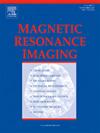DF-TransUNet: A novel TransUNet model of pixel level classification for cardiac MR image segmentation
IF 2
4区 医学
Q2 RADIOLOGY, NUCLEAR MEDICINE & MEDICAL IMAGING
引用次数: 0
Abstract
A crucial step in the intelligent healthcare system is the automatic analysis of medical images by machines and processing them accordingly, particularly in disease diagnosis, as it provides accurate anatomical structure information for subsequent treatment. This process provides precise anatomical data vital for the subsequent treatments. There is a problem of uneven intensity distribution and fuzzy boundaries etc. in medical images, which creates a great problem in the segmentation task. To cope with this problem, an improved TransUNet structure is introduced in this paper. This method is based on the TransUNet framework, and adds a pixel level classification module on the basis of TransUNet segmentation. This module can further classify the boundary parts of the mask to be segmented at the pixel level to achieve more accurate segmentation results. The method in this paper effectively reduces the classification errors associated with pixels near the boundaries of various masks within the MR image. In particular, The pixel classification module aims to learn the category of pixels near the mask boundary, and then enhance the original segmentation results through pixel level adjustments. To validate the effectiveness of this model, a series of experiments were conducted using the 2017 MICCAI Automated Cardiac Diagnostic Challenge (ACDC) dataset. The results show that with an average Dice coefficient of 90.55% and a Hausdorff distance of up to 2.23 mm, the proposed approach achieves a commendable segmentation performance. Code and models are available at https://github.com/laodeyip/DF-TransUNet.
DF-TransUNet:一种新的用于心脏MR图像分割的像素级TransUNet模型。
智能医疗系统的关键一步是通过机器自动分析医学图像并相应地进行处理,特别是在疾病诊断中,因为它为后续治疗提供了准确的解剖结构信息。这一过程为后续治疗提供了精确的解剖数据。医学图像存在强度分布不均匀、边界模糊等问题,这给分割任务带来了很大的困难。为了解决这个问题,本文介绍了一种改进的TransUNet结构。该方法基于TransUNet框架,在TransUNet分割的基础上增加像素级分类模块。该模块可以进一步在像素级对待分割的掩模的边界部分进行分类,以获得更准确的分割结果。本文方法有效地降低了MR图像中各种掩模边界附近像素相关的分类误差。其中,像素分类模块旨在学习掩模边界附近像素的类别,然后通过像素级调整来增强原始分割结果。为了验证该模型的有效性,使用2017年MICCAI自动心脏诊断挑战(ACDC)数据集进行了一系列实验。结果表明,该方法的平均Dice系数为90.55%,豪斯多夫距离为2.23 mm,取得了较好的分割效果。代码和模型可在https://github.com/laodeyip/DF-TransUNet上获得。
本文章由计算机程序翻译,如有差异,请以英文原文为准。
求助全文
约1分钟内获得全文
求助全文
来源期刊

Magnetic resonance imaging
医学-核医学
CiteScore
4.70
自引率
4.00%
发文量
194
审稿时长
83 days
期刊介绍:
Magnetic Resonance Imaging (MRI) is the first international multidisciplinary journal encompassing physical, life, and clinical science investigations as they relate to the development and use of magnetic resonance imaging. MRI is dedicated to both basic research, technological innovation and applications, providing a single forum for communication among radiologists, physicists, chemists, biochemists, biologists, engineers, internists, pathologists, physiologists, computer scientists, and mathematicians.
 求助内容:
求助内容: 应助结果提醒方式:
应助结果提醒方式:


